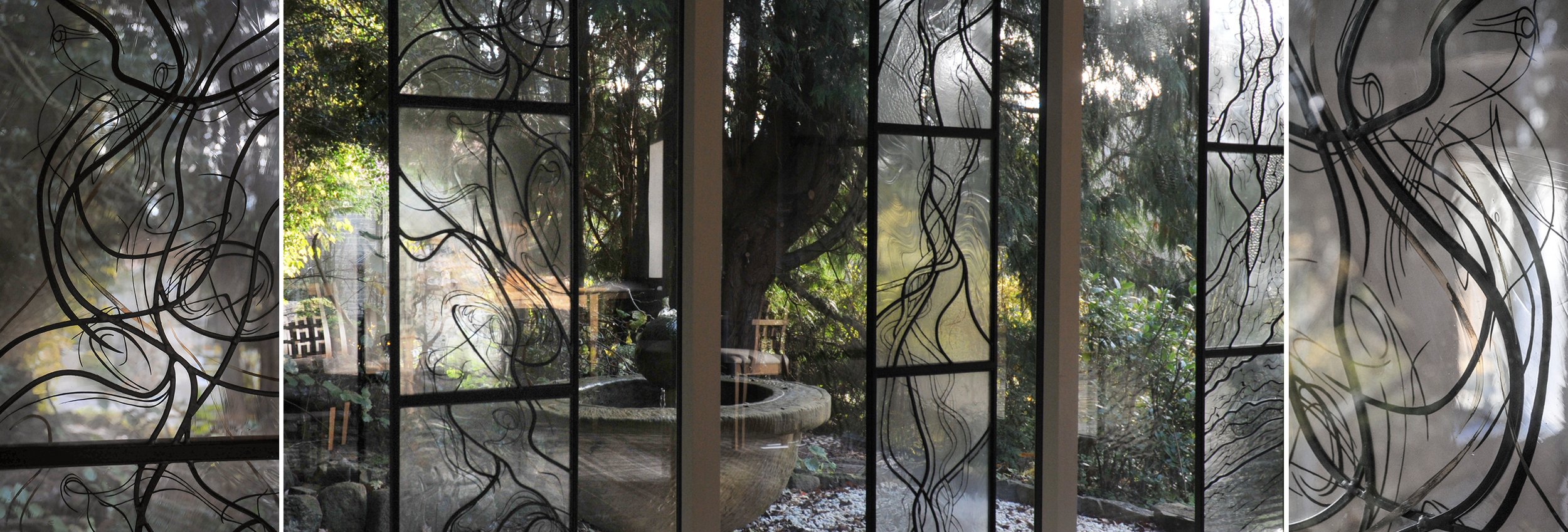
Perichoresis - dance of the TRINITY High dalby house
Dalby Forest, North Yorkshire, 2021
The glass panels that make up ‘Perichoresis – the Dance of the Trinity’ take their inspiration from the multilayered themes of the Trinity, transformed into an artwork that has depth and meaning as well as beauty and visual interest. Its aim is to encourage contemplation, to be meditative, to foster a sense of wellbeing, to give a sense of our oneness with nature, and to have relevance to both Christians and non-Christians alike.
The artwork’s development centred round the idea of the Trinity as recipe for life, taking on notions of individuality, relationship and community, all existing within a framework of equality and mutuality. The three elements of the Trinity were considered in a way that moved away from personification yet still embodied mutual interdependence and support in the pursuit of a common aim. The artwork seeks to embody aspects of the Trinity: that they are three elements in relationship, yet not individually separate; that they are also not three different modes of the same being; that they are three individual elements, and one element that is all of these, three as one. Each of the elements of the Trinity shares completely in the life of the other two; distinctions of the three are preserved; but the substance is not divided into three; they may not be separated; they are dynamically intermingled.
Research into the importance of nature for early Christians also fed into the designs, how they often prayed whilst immersed in rivers and talked to the animals as a spiritual practice. This radical one-ness with nature and the timeless spirit of place were ideas which fed into the artwork. The fact that High Dalby House is nestled in the middle of Dalby Forest, further solidified the intention to use natural imagery within the artwork. This also fits perfectly with the idea of ‘substance’, interpreted as ‘beingness’ something that fully exists, a presence in the universe.
Sacred geometry plays its part within the artwork too - the ‘divine proportion’ or ‘golden ratio’ was used to determine the dimensions of the glass panels. The number three’s relevance to the Trinity and the fact that there are three windows and three glass panels, each made of three smaller panels, added to mathematical harmony.
Symbolism within the Trinity led the choice of imagery within the designs. The breath of God; Jesus speaking ‘I am the vine’; and water as analogous to the holy spirit – the divine nature and power of God.
The final imagery was developed from studies in air currents made visible by rising smoke; from drawings of vines found in local forests; and from patterns of light refracted by the surface of water. In accordance with The Trinity there is no hierarchy within the imagery, and I hope it conveys fluidity, movement and a dynamic intermingling worthy of its title ‘Perichoresis – The Dance of The Trinity’.




